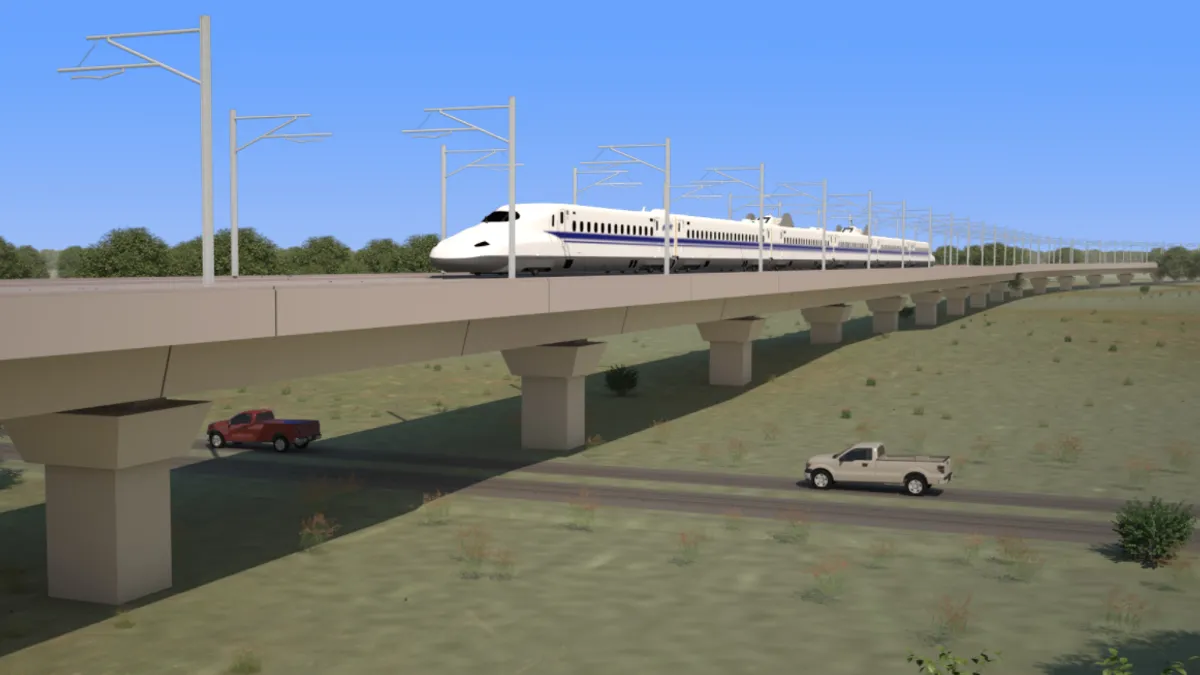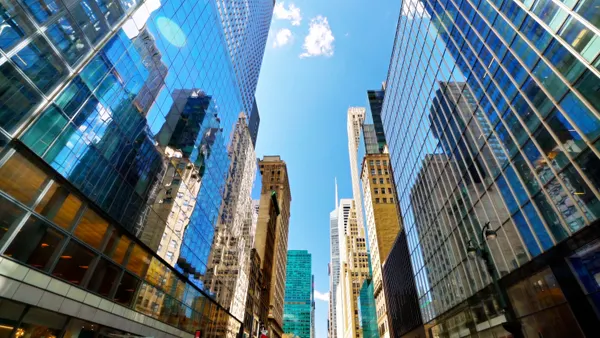Amtrak is inching closer to developing true high-speed rail, not in the heavily-traveled Northeast Corridor, but in Texas.
Andy Byford, Amtrak’s senior vice president of high-speed rail development, said on a Friday webinar that Amtrak sees Texas as being in need of better passenger rail service, especially among Dallas, Houston, Austin and San Antonio: the region known as the Texas triangle. “The state of Texas is growing exponentially, so we have big plans for all three sides of that triangle,” he said. Of all the potential high-speed rail routes in the U.S., he believes that Dallas to Houston “represents the one that is probably the most compelling.”
Byford joined Amtrak in April 2023; he previously ran the Toronto Transit Commission, the New York City Transit Authority and Transport for London. In August 2023, Amtrak announced that it was exploring a partnership with Texas Central Partners, which had been working for over 10 years on a high-speed rail line connecting Dallas and Houston.
Earlier this year, Amtrak announced it was taking the lead on the Texas Central project. “We inherited this from Texas Central, which was a private entity that had made progress on this and gained some key decisions,” Byford said on the webinar. An Amtrak spokesperson in an email described the relationship between the two entities as a collaboration.
More than four years have elapsed since the Federal Railroad Administration signed off on the environmental review for the project, which means the environmental impact statement needs to be reviewed to make sure nothing significant has changed, Byford explained on the webinar. Amtrak advanced the project to the third phase of the FRA’s Corridor Identification Program on Sept. 11, which enables Amtrak to coordinate with the FRA on preliminary engineering and environmental review.
But Byford warned that it’s not a done deal. “There's a lot of work still to be done. There's the matter of getting the funding package, the political support, the land,” he said. Then there’s the money part: Byford said constructing the high-speed rail line could cost $30 billion or more. “We would still need to put together the funding stack to make this thing a reality,” he said.
Nevertheless, Byford appeared hopeful. “If the ridership and the revenue are what we believe that they can be, that will have a massive positive impact to the Texan economy, which will benefit the whole of Texas.”
He also expressed optimism for the future of high-speed rail nationwide. “There finally seems to be this sense of momentum and determination to make the breakthrough, to actually make high-speed rail a reality here in the U.S.,” Byford said. “So I'm very excited about this.”











